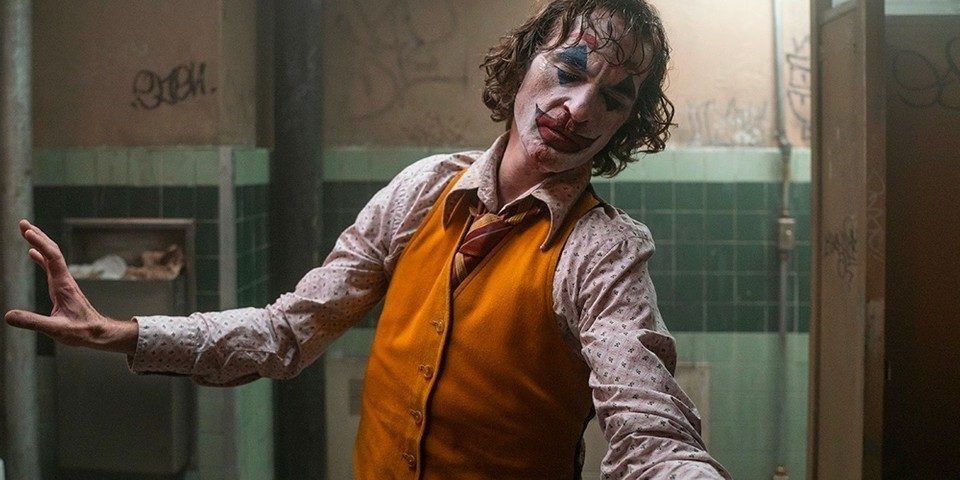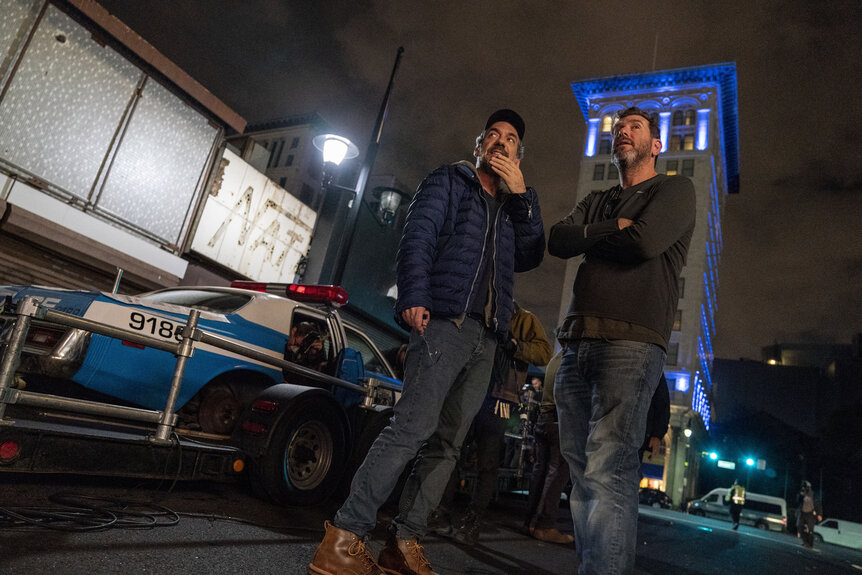Create a free profile to get unlimited access to exclusive videos, sweepstakes, and more!
Awards Contender: Inside Joker's insane bathroom and kitchen scenes

Welcome to Awards Contenders. This month, SYFY WIRE is talking to the actors, directors, designers, and craftspeople whose work was featured in the best movies and TV offerings of 2019, and who are now the leading awards nominees. Today, we're speaking with the Oscar- and ASC-nominated cinematographer Lawrence Sher of Joker.
Lawrence Sher can tell you all about the camera (a large-format ARRI), the vintage lenses, the aspect ratio, and everything else he used to create the look of Joker. But the thing that interested him most about shooting the film was the improvisational jazz style used by director Todd Phillips — the ongoing dance between the camera and its subject, Joaquin Phoenix. Here, Sher chats about what it was like to discover the essence of the movie in real time.
How did you plan for different contingencies while shooting?
I think this is a philosophy that has grown out of working with Todd Phillips over the last six movies, in which we always like to plan. There’s no question that we’ve planned everything. I’m a big planner guy — I’ll create shot lists, we’ll come in with ideas about the character arcs that apply to lighting, camera, lens choices, and things like that in pre-production, knowing all the while that the movie is a sort of fluid, organic thing you’re discovering as you make it. And so the idea is that if you can plan for all these things, it also gives you the freedom to throw it all out, but still retain some of the big ideas.
The more preparation, the more ideas you have in advance, the more you can throw it all away. Todd is a real believer in that — rewriting the screenplay as you make the movie and discovering what Joaquin is bringing to it.
This started early on, with Joaquin’s bathroom dance scene…
It was written as a scene with plot devices. He was supposed to hide the gun, he was supposed to wash the makeup off his face. On the day, though, it was, “Let’s throw out the plan, let’s try something that’s a little more expressionistic.” It was a very small bathroom, with two stalls. I didn’t want our camera operator to know what was going to happen, so we just watched Joaquin do it, and just covered it with the camera, with the camera operator dancing around him in a 360-degree circle.
We probably only did three takes, watching that first little step he takes and then coming back up to him to watch his kind of metamorphosis dance. It was exciting — it excited me, it excited Todd, and it sort of excited Joaquin. But this process depended on the scene. If we were doing the Murray Franklin show [scene], there’s a certain convention, in that he’s sitting on a couch being interviewed on a talk show. It’s not like he’s going to suddenly leap up and take off into the audience. But if he did, we’d cover it.
Did you have more freedom in the apartment scenes? Did he surprise you?
That was about lighting the space in a way that allowed that freedom, and just allowed Joaquin to discover things. Dancing with his mom and putting her to bed after his comedy routine – the way we shot that was, we just moved the camera around him. It wasn’t about setting marks and rehearsing it. Sometimes we would start shooting the minute Joaquin walked into the room, so there could be things that would happen before and after the action we had planned. We didn’t know when the scene would be over. It was just exploratory filmmaking, like Joaquin going inside the fridge.
What happened there?
The fridge, that was truly exploring the idea of insomnia. What if this guy was just going down the path of madness? I think we wanted to explore some things in the apartment that would represent what you’d be doing all night. So we set up two cameras in the kitchen, one in the doorway far enough to be able to see what Joaquin would do, and one big camera through the little window that sort of connects the kitchen to the living room. We just waited. Literally, we just rolled the cameras when Joaquin walked in and we just witnessed it.
There’s not a lot of camera movement, but you can see at the end, there was this sort of odd little camera move that happens after he crawls in the fridge, like, “Well, what do we do now?” Even in there, in the messy, handmade way that the movie was, we wanted you to feel like you’re witnessing it for the first time, too. There was never an idea like, “Oh, should we get in the fridge with him?” because that would feel too planned. We would have to have known he was getting in there.
Were there other ideas he explored that didn’t make it into the movie?
Joaquin flirted with another idea in that same kitchen, where he was just washing the dishes and he was crying. It thought that was pretty stunning. And there was a scene where he was taking a bath and singing to himself — that was sort of cool. Near the end of the movie, we found a way to shoot what was in the script but also find opportunities to dig out stuff that could serve to inform the character. Some of this was a function of the space itself. It’s not like we would ever move set walls to pull the camera way back. We liked the constraint, as if we were shooting on a real location.
This idea of jazz filmmaking, or whatever you want to call it, means I almost don’t want to see a rehearsal now. There’s something about the pre-planning where you get too specific with your ideas, and you put blinders on yourself. You’re unable to see something outside of those blinders that might be even better than what you had in your head. It’s a different muscle for the crew, to be able to go from a real wide shot right into a close-up in the same shot, but we figured it out. You just have to be really present.



























